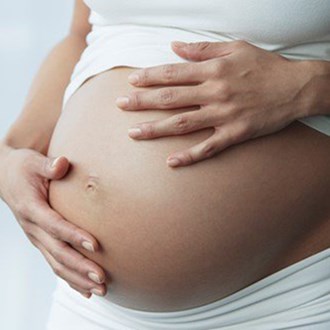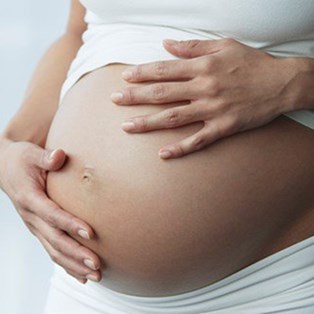Bleeding in pregnancy, labour and after birth

A midwife explains what to expect
By Livia Gamble
May 05 2017
A small amount of bleeding in pregnancy is not uncommon and does not always mean there is a problem.
It does, however, need investigation. Often no cause is found but occasionally it can be something serious, such as the placenta separating from the uterus too early or the placenta lying over the opening to the cervix (this is called placenta praevia).
The labour show
Labour often begins with what is referred to as a ‘bloody show’, which may be bright red blood or just blood-tinged mucus, and is a good sign that labour is getting closer.
When the cervix begins to open there may be a small amount of bleeding that can continue throughout labour and be quite normal. Your midwife will assess if the blood loss is excessive and needs further monitoring.
Placenta praevia
Occasionally, blood loss during labour is heavy and may mean the placenta has separated too early or there is placenta praevia.
These days, women already know the position of the placenta during pregnancy, so finding out you have placenta praevia in labour is unlikely.
However, if the placenta has separated this may affect the baby so she will be closely monitored via a CTG machine that traces her heart rate.
A decision to deliver via caesarean may be made if the baby’s heartbeat becomes a concern.
Blood after birth
The largest amount of blood you are likely to see will be after the birth. The third stage of labour is when the placenta is delivered, after which there is an open area left inside your uterus where it was attached.
This area is full of blood vessels that were supplying the placenta and they now have to constrict to stop the blood flow.
The uterus contracts down to close off the vessels at the placental site, but if there is a bit of placenta still left inside, or your uterus is tired from the birth and unable to contract, then you will bleed heavily.
Too much blood
If you look like you are losing too much blood (anything greater than 500ml), the staff will give you fluids intravenously withsyntocinon added (a synthetic form of the hormone oxytocin), which encourages the uterus to contract tightly and stop the bleeding.
Occasionally, the bleeding is not from the uterus but from a vessel that has been torn during birth and the midwife or doctor will repair the tear with stitches to control the bleeding.
How long after birth?
In the days following the birth you can expect to bleed about the same amount as for the first day of your period for a couple of days, then it tapers off.
You will notice that the colour changes from bright red to a dark brown-red then to a pinkish discharge. Once you are home and up and about doing more the loss may become slightly heavier again. Blood loss lasts four to six weeks for most women, but it does vary, with some having very little loss in the early days then heavier weeks later at home.
The bleeding is a good reminder that you have recently given birth and need to be gentle with yourself.
If you have bled a lot after the birth, your level of haemoglobin (Hb) will be checked. If it is low, rest, iron tablets and a well- balanced diet should restore you to normal in a couple of weeks.
If it is extremely low you may be advised to have a blood transfusion, but this is very rare these days.
It is important to be in good health prior to giving birth so if you do lose a lot of blood, you will recover well.
If your Hb level is low when checked at 28 weeks gestation, you will be advised to take iron to bring it up to an optimal level for birth. If the level still does not come up whilst taking oral iron you will be advised to have an infusion of iron, which requires a few hours in the hospital.













